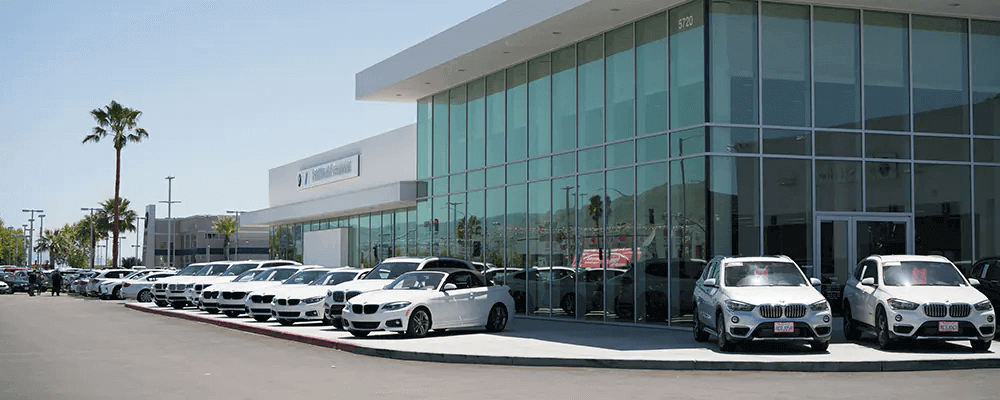
If you’re in the market for a used BMW, congratulations on considering one of the most luxurious and reliable brands on the road. BMW, short for Bayerische Motoren Werke, is known worldwide for its exceptional performance, premium materials, and innovative features. However, buying a used BMW requires careful research to ensure you’re making a wise investment.
From selecting the right model to understanding how to decode the BMW VIN, inspecting the vehicle, and financing, this guide covers everything you need to know before buying a used BMW.
Why Choose a Used BMW?
BMW vehicles are a popular choice among drivers who value elegance, performance, and reliability. Here’s why buying a used BMW can be an excellent decision:
- Luxurious Experience: BMWs offer high-end interiors with premium materials and advanced features.
- Exceptional Performance: Known for powerful engines and smooth handling, they provide an unmatched driving experience.
- Great Value for Money: Used BMWs tend to retain their value better than other brands due to their durability and reputation.
- Eco-Friendly Option: Opting for a pre-owned car reduces manufacturing emissions, making it a greener choice.
Step 1: Choose the Right BMW Model
BMW offers a variety of models, each catering to different lifestyles and preferences. To find the perfect fit, consider the following factors:
1. Body Style
- Sedans: For those seeking comfort and practicality (e.g., BMW 3 Series or 5 Series).
- SUVs: Ideal for families or those needing more space (e.g., BMW X3 or X5).
- Coupes: A stylish choice for drivers prioritizing aesthetics (e.g., BMW 4 Series).
2. Performance Options
- Look into engine types, horsepower, and transmission for the desired driving experience.
- Consider BMW’s M models if you want high-performance vehicles.
3. Features and Safety Ratings
- Check for luxury amenities like leather seats, infotainment systems, and driver-assistance features.
- Compare safety ratings across models for peace of mind.
Step 2: Understand Mileage and Vehicle History
When evaluating a used BMW, mileage and history are critical factors:
- Mileage Tip: Avoid vehicles with over 100,000 miles unless they’re well-maintained with a detailed service history.
- Check the VIN: Use a VIN checker tool to uncover:
- Accident history
- Title issues (e.g., salvage or flood damage)
- Odometer rollbacks
- Recalls and defects
Step 3: Professional Inspections Matter
A professional inspection can save you from costly surprises. Here’s what a mechanic should examine:
- Engine and Transmission: Check for leaks, unusual noises, and smooth operation.
- Brakes and Suspension: Ensure safe braking and a stable ride.
- Exterior and Interior Condition: Look for rust, dents, or wear on upholstery and trims.
- Electronics: Verify that all systems (e.g., navigation, climate control) work properly.
Step 4: Test Driving a Used BMW
A thorough test drive is non-negotiable. Here’s how to assess the car’s condition while driving:
- Handling and Comfort: Test for smooth acceleration and responsive steering.
- Braking Performance: Ensure the brakes are firm and don’t pull to one side.
- Suspension: Drive over bumps to evaluate how the car absorbs shocks.
- Noise Levels: Listen for unusual sounds like rattles, knocks, or vibrations.
- Dashboard Warnings: Make sure there are no warning lights on the dashboard.
Step 5: Financing and Warranties
Financing a used BMW can make it more affordable. Here are your options:
- Auto Loans: Many dealerships offer competitive rates for pre-owned vehicles.
- Leasing: Some dealers provide lease agreements for used cars.
- Extended Warranties: Consider purchasing a warranty for added protection, especially if the vehicle is out of its original warranty period.
BMW VIN Decoding: What You Need to Know
The Vehicle Identification Number (VIN) is your gateway to uncovering a BMW’s history. Here’s where to find it:
- On the dashboard near the windshield.
- Inside the driver’s side door jamb.
- On the engine block or vehicle documents.
Use a VIN checker tool to get a detailed vehicle history report, including ownership details, mileage verification, and accident history.
Top Tips for Buying a Used BMW
- Do Your Research: Know the model’s common issues and maintenance requirements.
- Inspect Thoroughly: Don’t skip a professional inspection.
- Negotiate Wisely: Use the car’s history and inspection results as leverage.
- Verify Mileage and Ownership History: Avoid vehicles with inconsistencies in records.
- Set a Budget: Include costs for insurance, maintenance, and potential repairs.
Conclusion: Why a Used BMW Could Be Your Best Purchase
Buying a used BMW is a smart way to enjoy luxury, reliability, and performance without the hefty price tag of a new car. By following this guide, you can confidently select, inspect, and purchase a used BMW that fits your needs and budget.
Ready to start your search? Begin by decoding the VIN and scheduling a test drive today!